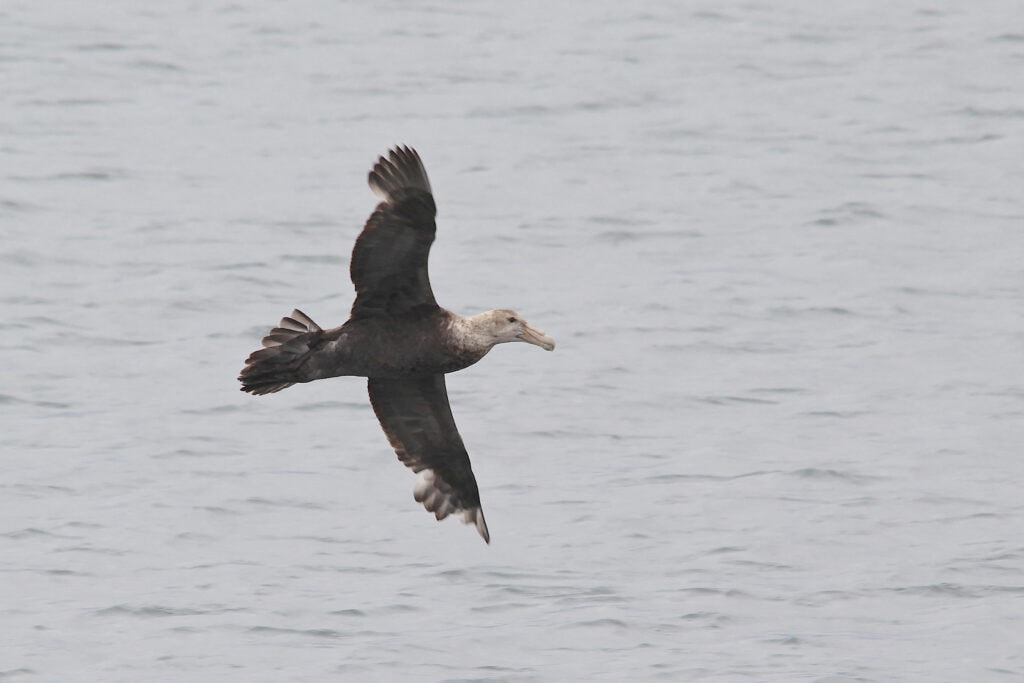If you think of a fearsome bird, what do you picture? A majestic Bald Eagle? Maybe a sleek Peregrine Falcon, or a mysterious Great Gray Owl? What about a sea bird? If you’re picturing a cute and cuddly little Auklet, think again! It’s time to get to know the big bad wolf of sea birds; the Giant Petrel.
There are two birds who go by the name “Giant Petrel.” The Northern Giant Petrel and the Southern Giant Petrel overlap in range, despite what their name implies, and can be difficult to tell apart. Both of these birds dwell around the Antarctic continent and subantarctic islands. They resemble an albatross in both size and shape, though they are stockier and have slightly thicker bills.
Related Article: Spanish Griffon Vultures Released in Cyprus to Address Population Decline
Fun Facts About the Giant Petrel
The Giant Petrel has a ferocious reputation, but it is also a beautiful sea bird with plenty of fascinating characteristics. Let’s explore what makes the Giant Petrel special.
Vultures of the sea: The six foot wingspan of the Giant Petrel is enough to give them an intimidating look, but google these birds and what you find will likely be gruesome. The internet is chock full of pictures of Giant Petrels covered in blood and viscera. This looks frightening, but these bloody images are usually due to scavenging. Most of the Giant Petrel’s diet is made up of live squid and other invertebrates and the carcasses of larger animals like seals and whales.
Penguin predators: Perhaps the biggest reason that Giant Petrels tend to have a bad reputation is the fact that they often eat penguins. Although scavenging and hunting invertebrates accounts for most of their diet, a hungry petrel will happily devour a young penguin, or even an adult penguin if it manages to catch one. Sometimes, they’ll even gang up on large penguin species like King Penguins.
Lifelong romance: With such a gnarly reputation, it might be hard to associate the Giant Petrel with romance, but like their lookalike albatrosses, Giant Petrels form strong pair bonds. They will return to the same nest site year after year and they have a tendency to mate for life.
A smelly defense: One nickname for the Giant Petrel is the “Stinker.” You might think that chowing down on carrion is enough to earn such an epithet, but the Giant Petrel takes it one step further. When threatened, these birds will regurgitate their stomach contents, repelling anything that approaches them. It’s a stinky strategy that puts off predators.
Different colors: Most Giant Petrels are brownish gray in color, but a limited number of Southern Giant Petrels have white plumage flecked with gray. This color palette gives them an even stronger resemblance to albatrosses. Roughly 15% of Southern Giant Petrels are white.
The Future of the Giant Petrel
In the past, both Northern and Southern Giant Petrels were classified as “near threatened” and their populations were projected to gradually decline. Increases in the populations of some of their favorite foods, as well as refuse from fishing boats and improved measures to prevent bird entanglement in fishing lines have all contributed to a reversal of this decline. As of the mid 2000s, both Giant Petrel species were downgraded to “least concern.” They are believed to be increasing globally.
Popular Article: Extremely Rare Gannet Fossil Found Along Chesapeake Bay

